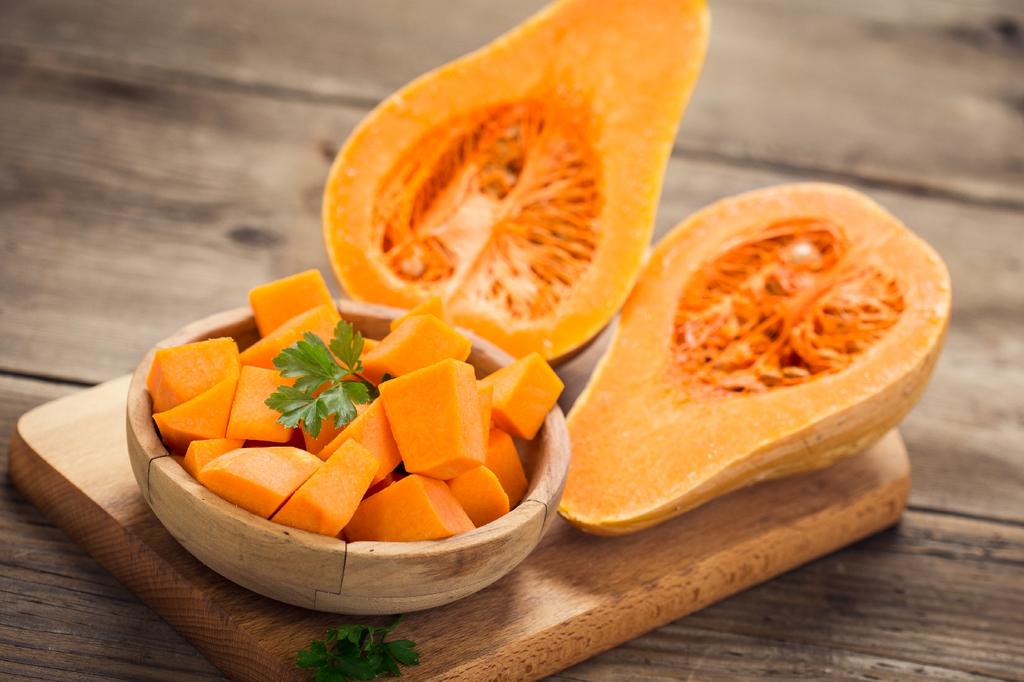Worth knowing:
The Butternut produces longish, pear-shaped fruits with a light brown outer wall and dense orange-coloured inner flesh. The fruit flesh is soft and generally not fibrous. The fruits can become up to 20 cm in length and weigh about 2 kilograms. Every plant produces 3 to 4 fruits in average.
Natural Location:
The squash has its origin in South America. Today, it is cultivated in all warm regions all over the world.
Cultivation:
You may sow the seeds out in the open starting from mid May. However, with pre-cultivation indoors on your windowsill starting from mid March, you can achieve a richer harvest. Place only one or two seeds about 2 cm deep into a bigger pot with moist potting substrate, as pumpkins grow sweepingly wide. Cover the seed container with clear film that you provide with a few small holes. That way the substrate doesn’t dry out, but also gets some air. Every second or third day, you might want to take the clear film completely off for about 2 hours to avoid mold formation on your potting compost. Place the seed container somewhere bright and warm with a temperature between 20° and 25° Celsius and keep the substrate moist, but not wet. The germination usually takes place after two to three weeks. After another month, you may shift the plants into bigger pots or plant them out in the garden (not more than 8 plants per square meter). It usually takes about 2 months from the germination to the flower formation, and another month until fruit formation.
Place:
Pick a sunny place for cultivation.
Care:
Pumpkins prefer nutritious subsoil and grow nicely in substrate that has been enriched with humus. If you grow the squash with regular garden soil, it will regularly need some fluid fertilizer. Make sure to water the plant regularly and plentiful. To protect the pumpkin from rotting, you might want to place a wooden board underneath the fruit so it doesn’t lie on the ground directly. Towards the end of the vegetation period, you can cut off bigger leaves to allow the plant to spend more energy on developing the fruits. Pumpkins are very popular with snails, you might want to place a slug fence around for protection.
During the winter:
Sow again in the next year.
Picture credits:
- © About © : Contact SAFLAX - - http://www.saflax.de/copyright
- © Frank Laue - © Saflax - http://www.saflax.de/copyright
- © Frank Laue - © Saflax - http://www.saflax.de/copyright
- © About © : Contact SAFLAX - - http://www.saflax.de/copyright
- © About © : Contact SAFLAX - - http://www.saflax.de/copyright
- © About © : Contact SAFLAX - - http://www.saflax.de/copyright
- © About © : Contact SAFLAX - - http://www.saflax.de/copyright
- © About © : Contact SAFLAX - - http://www.saflax.de/copyright
- © About © : Contact SAFLAX - - http://www.saflax.de/copyright












































